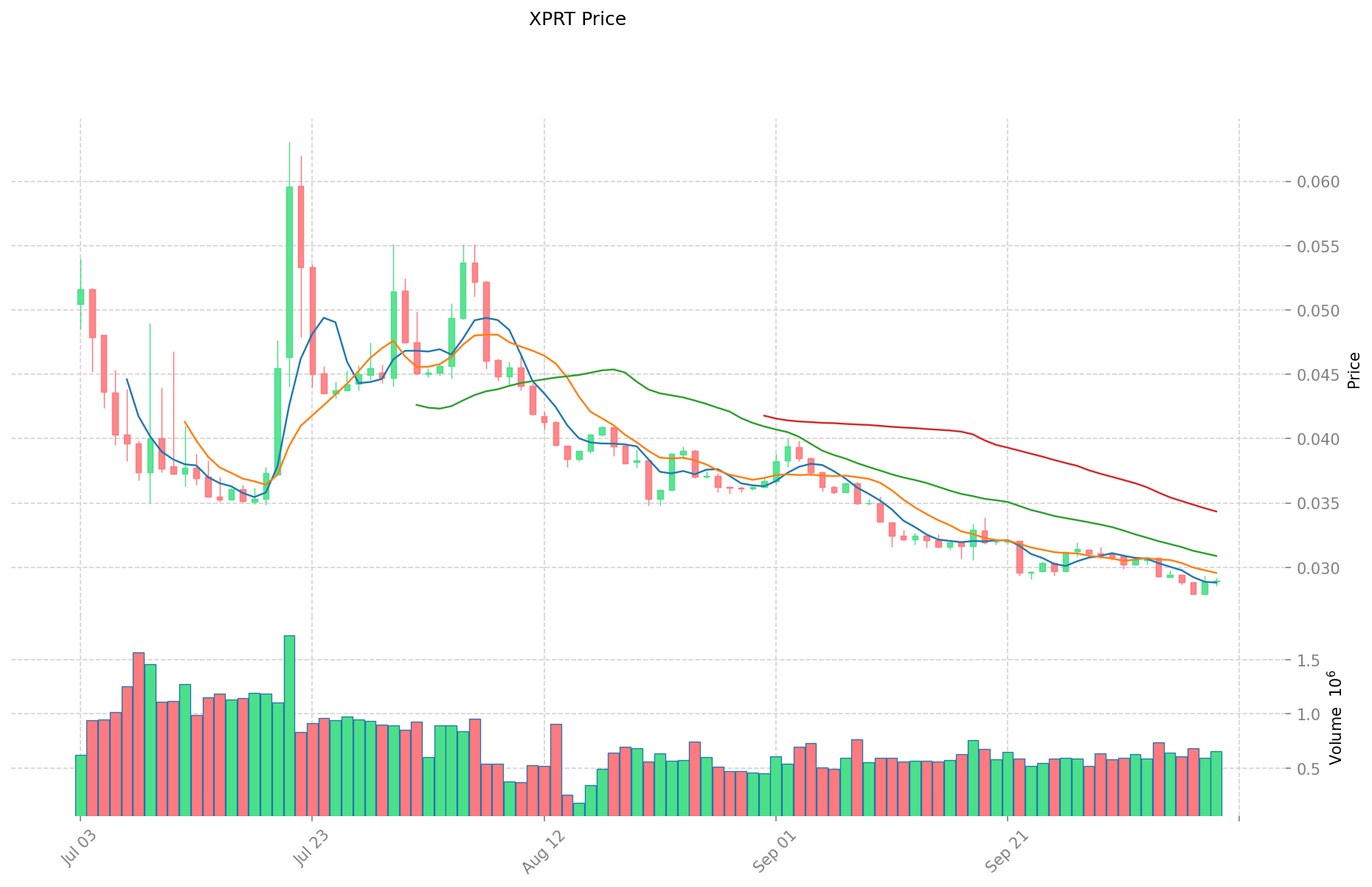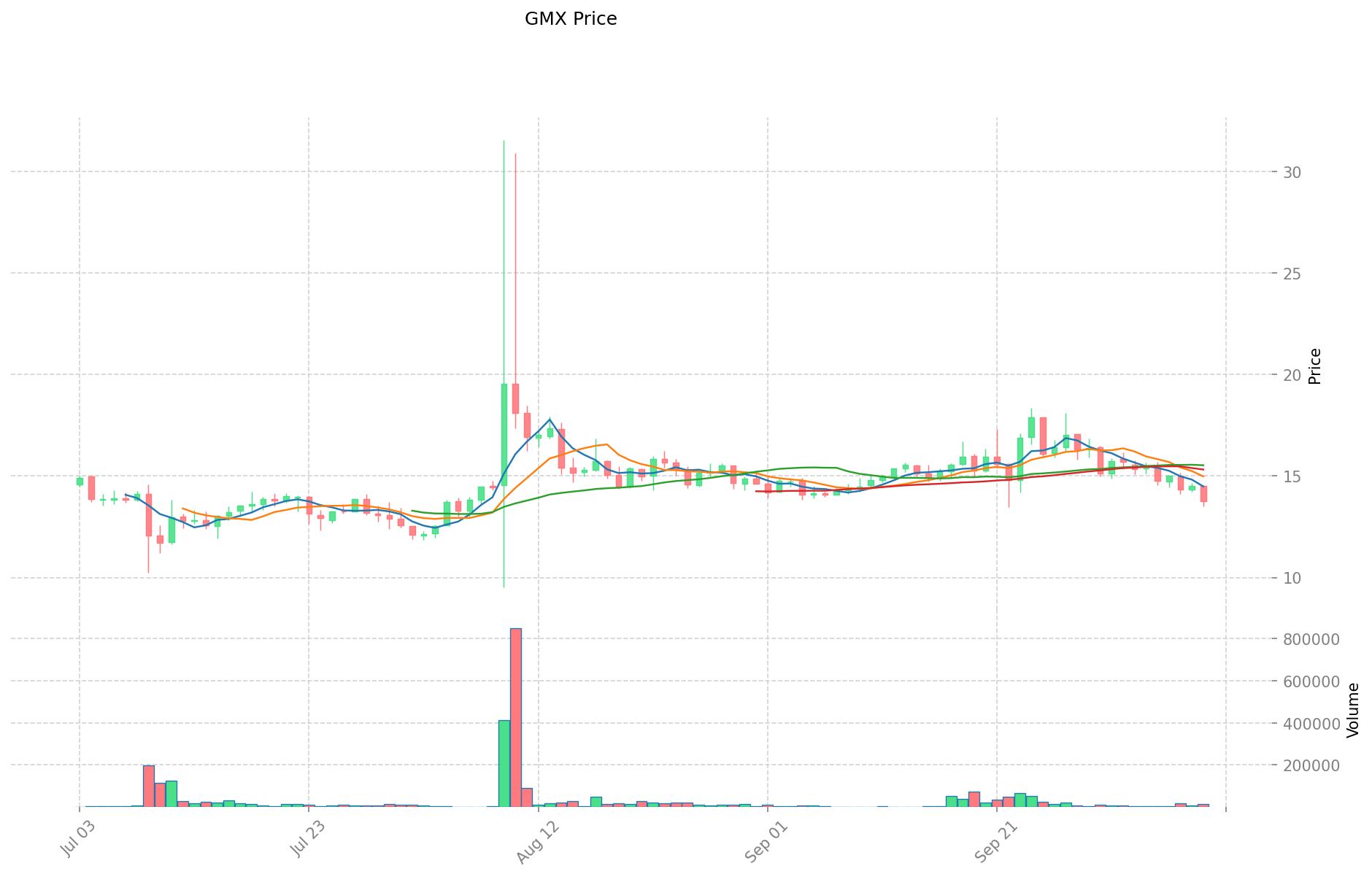XPRT vs GMX: Comparing Two Leading Cryptocurrency Exchange Platforms
Introduction: XPRT vs GMX Investment Comparison
In the cryptocurrency market, the comparison between Persistence (XPRT) and GMX (GMX) has been an unavoidable topic for investors. The two not only show significant differences in market cap ranking, application scenarios, and price performance but also represent different positioning in the crypto asset space.
Persistence (XPRT): Since its launch, it has gained market recognition for promoting the lending of encrypted assets using real-world assets as collateral.
GMX (GMX): It has been hailed as a decentralized and sustainable exchange since its inception, with its token serving as both a utility and governance token.
This article will comprehensively analyze the investment value comparison between XPRT and GMX, focusing on historical price trends, supply mechanisms, institutional adoption, technological ecosystems, and future predictions, attempting to answer the question most concerning to investors:
"Which is the better buy right now?"
I. Price History Comparison and Current Market Status
XPRT (Coin A) and GMX (Coin B) Historical Price Trends
- 2021: XPRT reached its all-time high of $16.59 on May 15, 2021.
- 2025: XPRT hit its all-time low of $0.02789236 on October 8, 2025.
- Comparative analysis: During this market cycle, XPRT dropped from its peak of $16.59 to a low of $0.02789236, while GMX's all-time high was $91.07 on April 18, 2023, and its all-time low was $9.61 on April 7, 2025.
Current Market Situation (2025-10-10)
- XPRT current price: $0.02897
- GMX current price: $13.76
- 24-hour trading volume: XPRT $18,935.55 vs GMX $182,104.31
- Market Sentiment Index (Fear & Greed Index): 64 (Greed)
Click to view real-time prices:
- Check XPRT current price Market Price
- Check GMX current price Market Price


II. Core Factors Affecting Investment Value of XPRT vs GMX
Supply Mechanisms Comparison (Tokenomics)
-
XPRT: Inflationary model with staking rewards; initial supply of 35 million tokens with an inflation rate between 7-20% annually depending on staking ratio
-
GMX: Deflationary model where 30% of platform fees are used to buy back and burn GMX tokens; maximum supply cap of 13.25 million GMX
-
📌 Historical Pattern: Deflationary models like GMX's tend to create more price support during market downturns, while XPRT's higher inflation requires stronger adoption rates to maintain price stability.
Institutional Adoption and Market Applications
- Institutional Holdings: GMX has attracted more institutional attention due to its revenue-generating model and consistent trading volume on derivatives platforms
- Enterprise Adoption: GMX has stronger integration within DeFi trading infrastructure, while XPRT focuses on interchain security and broader Cosmos ecosystem applications
- Regulatory Attitudes: Both face similar regulatory scrutiny as DeFi tokens, though GMX's derivatives focus may invite more regulatory attention in jurisdictions targeting leveraged trading platforms
Technical Development and Ecosystem Building
- XPRT Technical Upgrades: Implementation of interchain security allowing Persistence to provide security as a service to other Cosmos chains; development of liquid staking solutions through pSTAKE
- GMX Technical Development: Multi-chain expansion from Arbitrum to Avalanche; introduction of GMX V2 with improved liquidity management and reduced price impact for traders
- Ecosystem Comparison: GMX has stronger DeFi integration with over $400M TVL and established revenue streams, while XPRT serves as infrastructure within the broader Cosmos ecosystem supporting liquid staking and cross-chain security
Macroeconomic Factors and Market Cycles
- Performance in Inflationary Environments: GMX shows stronger resilience due to its fee-sharing model providing real yield during market uncertainty
- Monetary Policy Effects: Both tokens face similar pressures from interest rate changes, though GMX's trading volume may benefit during periods of market volatility
- Geopolitical Factors: XPRT's focus on interoperability potentially offers advantages in fragmented regulatory environments, while GMX benefits from increased trading activity during market uncertainty
III. 2025-2030 Price Prediction: XPRT vs GMX
Short-term Prediction (2025)
- XPRT: Conservative $0.0150644 - $0.02897 | Optimistic $0.02897 - $0.0362125
- GMX: Conservative $7.1604 - $13.77 | Optimistic $13.77 - $15.147
Mid-term Prediction (2027)
- XPRT may enter a growth phase, with an estimated price range of $0.02315934225 - $0.0493838915625
- GMX may enter a bullish market, with an estimated price range of $8.4321972 - $21.080493
- Key drivers: Institutional capital inflow, ETF, ecosystem development
Long-term Prediction (2030)
- XPRT: Base scenario $0.046210039938562 - $0.060535152319517 | Optimistic scenario $0.060535152319517+
- GMX: Base scenario $23.299000179525 - $32.85159025313025 | Optimistic scenario $32.85159025313025+
Disclaimer: This analysis is based on historical data and market projections. Cryptocurrency markets are highly volatile and unpredictable. This information should not be considered as financial advice. Always conduct your own research before making investment decisions.
XPRT:
| 年份 | 预测最高价 | 预测平均价格 | 预测最低价 | 涨跌幅 |
|---|---|---|---|---|
| 2025 | 0.0362125 | 0.02897 | 0.0150644 | 0 |
| 2026 | 0.0355244625 | 0.03259125 | 0.0224879625 | 12 |
| 2027 | 0.0493838915625 | 0.03405785625 | 0.02315934225 | 17 |
| 2028 | 0.047144587514062 | 0.04172087390625 | 0.022946480648437 | 44 |
| 2029 | 0.047987349166968 | 0.044432730710156 | 0.033324548032617 | 53 |
| 2030 | 0.060535152319517 | 0.046210039938562 | 0.040664835145935 | 59 |
GMX:
| 年份 | 预测最高价 | 预测平均价格 | 预测最低价 | 涨跌幅 |
|---|---|---|---|---|
| 2025 | 15.147 | 13.77 | 7.1604 | 0 |
| 2026 | 16.77186 | 14.4585 | 8.38593 | 5 |
| 2027 | 21.080493 | 15.61518 | 8.4321972 | 13 |
| 2028 | 21.65044707 | 18.3478365 | 17.797401405 | 33 |
| 2029 | 26.59885857405 | 19.999141785 | 17.9992276065 | 45 |
| 2030 | 32.85159025313025 | 23.299000179525 | 18.87219014541525 | 69 |
IV. Investment Strategy Comparison: XPRT vs GMX
Long-term vs Short-term Investment Strategies
- XPRT: Suitable for investors focused on interoperability and Cosmos ecosystem growth
- GMX: Suitable for investors seeking DeFi yield and trading platform exposure
Risk Management and Asset Allocation
- Conservative investors: XPRT: 30% vs GMX: 70%
- Aggressive investors: XPRT: 50% vs GMX: 50%
- Hedging tools: Stablecoin allocation, options, cross-token combinations
V. Potential Risk Comparison
Market Risk
- XPRT: Higher volatility due to lower market cap and trading volume
- GMX: Exposure to derivatives market fluctuations and liquidity risks
Technical Risk
- XPRT: Scalability, network stability within the Cosmos ecosystem
- GMX: Smart contract vulnerabilities, oracle dependencies
Regulatory Risk
- Global regulatory policies may impact both tokens differently, with GMX potentially facing more scrutiny due to its derivatives focus
VI. Conclusion: Which Is the Better Buy?
📌 Investment Value Summary:
- XPRT advantages: Interchain security provider, liquid staking solutions, Cosmos ecosystem integration
- GMX advantages: Established revenue model, strong DeFi integration, deflationary tokenomics
✅ Investment Advice:
- New investors: Consider a balanced approach with a slight bias towards GMX due to its more established market position
- Experienced investors: Explore a diversified portfolio including both tokens, with allocation based on risk tolerance
- Institutional investors: Focus on GMX for its liquidity and yield generation, while monitoring XPRT for long-term ecosystem growth potential
⚠️ Risk Warning: The cryptocurrency market is highly volatile, and this article does not constitute investment advice. None
VII. FAQ
Q1: What are the main differences between XPRT and GMX? A: XPRT focuses on interchain security and liquid staking within the Cosmos ecosystem, while GMX is a decentralized exchange platform with a strong focus on derivatives trading. XPRT has an inflationary tokenomics model, while GMX is deflationary.
Q2: Which token has performed better historically? A: GMX has shown better historical performance, with its all-time high of $91.07 in April 2023 compared to XPRT's all-time high of $16.59 in May 2021. GMX has also maintained a higher price and trading volume as of October 2025.
Q3: What are the key factors affecting the investment value of XPRT and GMX? A: Key factors include supply mechanisms (tokenomics), institutional adoption, technical development, ecosystem building, and macroeconomic factors such as inflation and monetary policy.
Q4: How do the price predictions for XPRT and GMX compare for 2030? A: For 2030, XPRT's base scenario predicts a range of $0.046210039938562 - $0.060535152319517, while GMX's base scenario predicts $23.299000179525 - $32.85159025313025. GMX is expected to have a higher potential price range.
Q5: What are the main risks associated with investing in XPRT and GMX? A: Both face market risks due to crypto volatility. XPRT has higher volatility due to lower market cap and volume. GMX faces exposure to derivatives market fluctuations. Technical risks include scalability for XPRT and smart contract vulnerabilities for GMX. Regulatory risks may impact both, with GMX potentially facing more scrutiny due to its derivatives focus.
Q6: How should investors allocate their portfolio between XPRT and GMX? A: Conservative investors might consider allocating 30% to XPRT and 70% to GMX, while aggressive investors might opt for a 50-50 split. The exact allocation should be based on individual risk tolerance and investment goals.
Q7: Which token is considered a better buy for different types of investors? A: New investors might lean towards GMX due to its more established market position. Experienced investors could consider a diversified portfolio including both tokens. Institutional investors might focus on GMX for liquidity and yield generation while monitoring XPRT for long-term ecosystem growth potential.
Share
Content